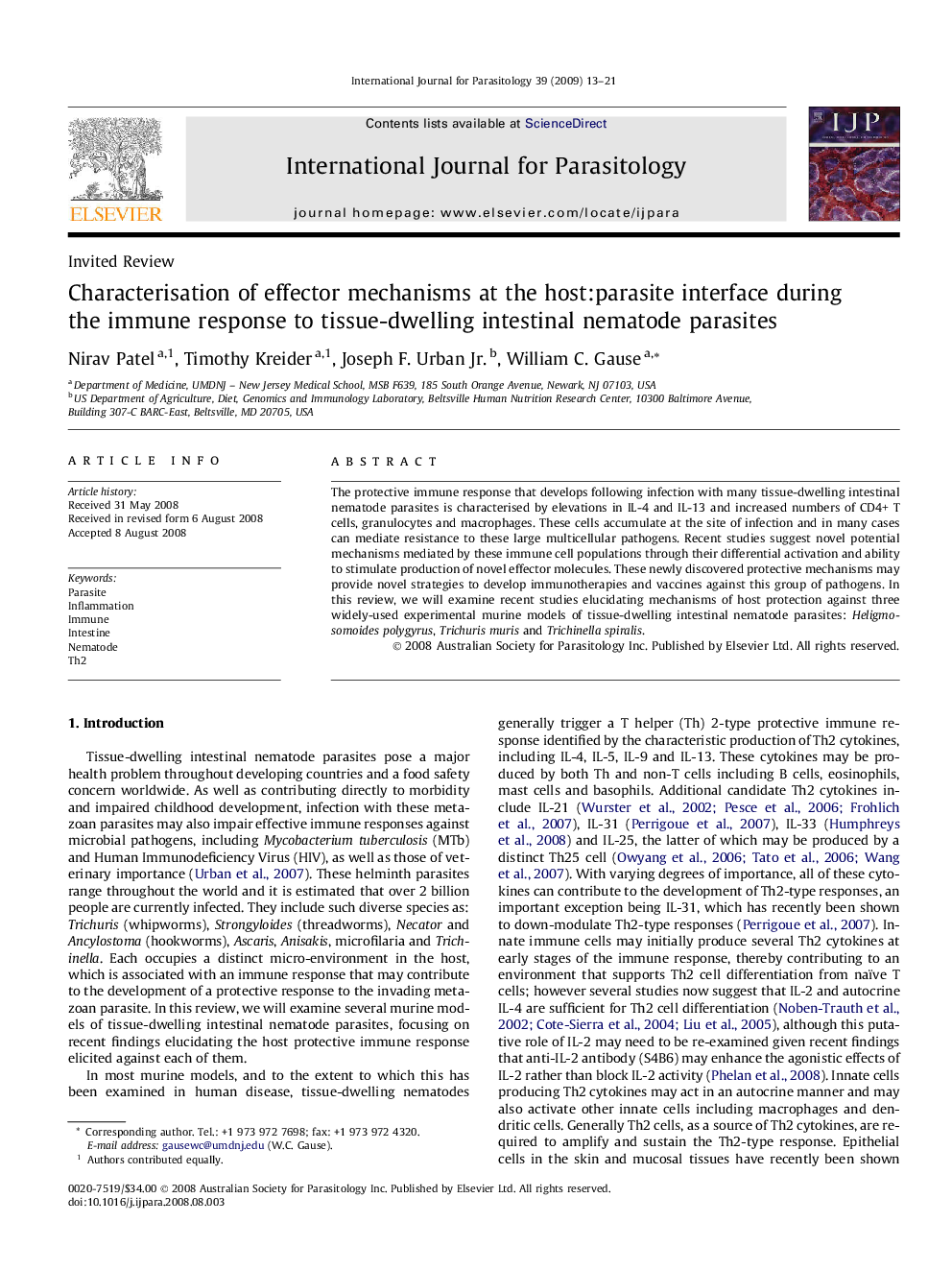| Article ID | Journal | Published Year | Pages | File Type |
|---|---|---|---|---|
| 2436609 | International Journal for Parasitology | 2009 | 9 Pages |
The protective immune response that develops following infection with many tissue-dwelling intestinal nematode parasites is characterised by elevations in IL-4 and IL-13 and increased numbers of CD4+ T cells, granulocytes and macrophages. These cells accumulate at the site of infection and in many cases can mediate resistance to these large multicellular pathogens. Recent studies suggest novel potential mechanisms mediated by these immune cell populations through their differential activation and ability to stimulate production of novel effector molecules. These newly discovered protective mechanisms may provide novel strategies to develop immunotherapies and vaccines against this group of pathogens. In this review, we will examine recent studies elucidating mechanisms of host protection against three widely-used experimental murine models of tissue-dwelling intestinal nematode parasites: Heligmosomoides polygyrus, Trichuris muris and Trichinella spiralis.
